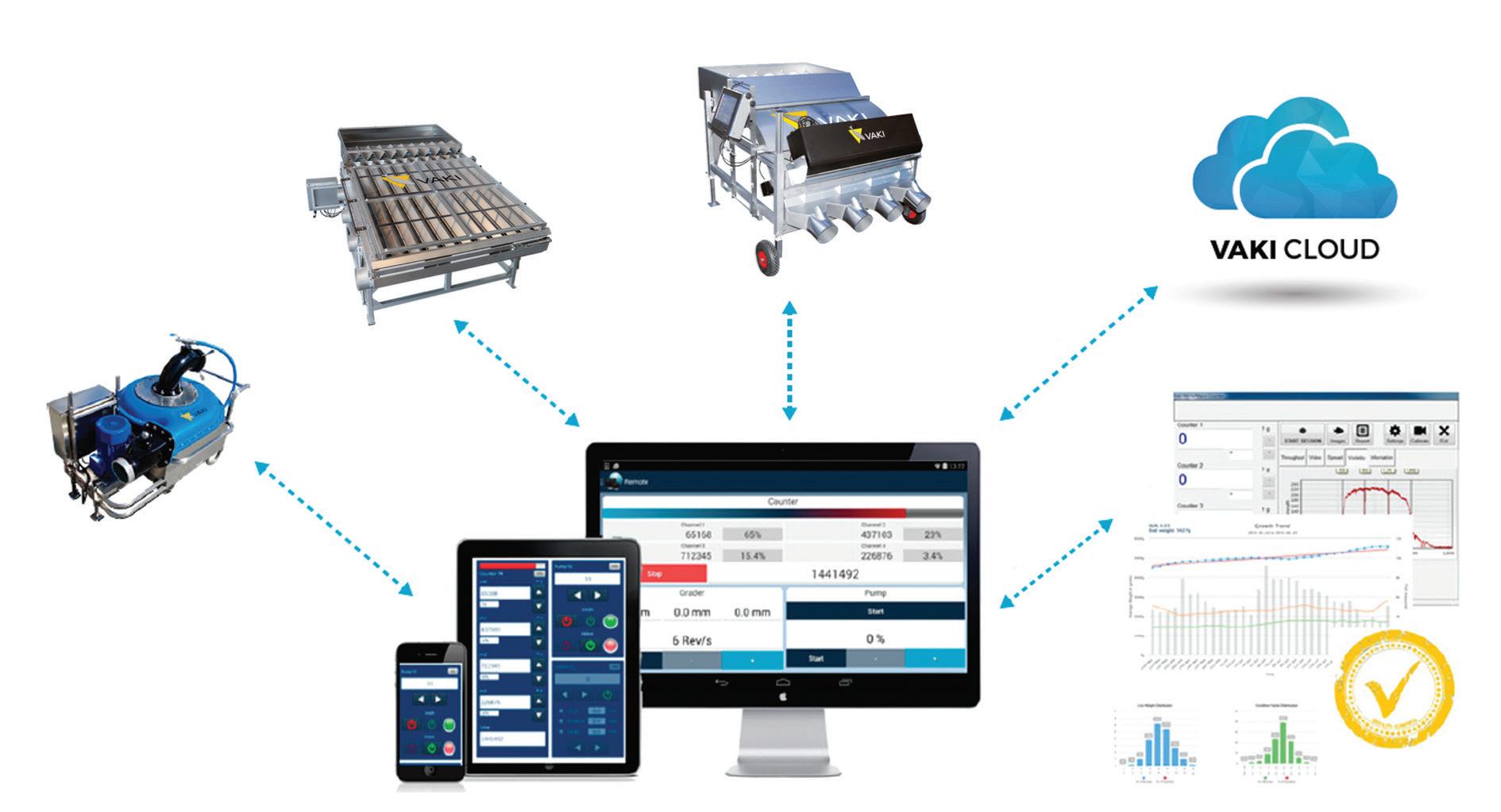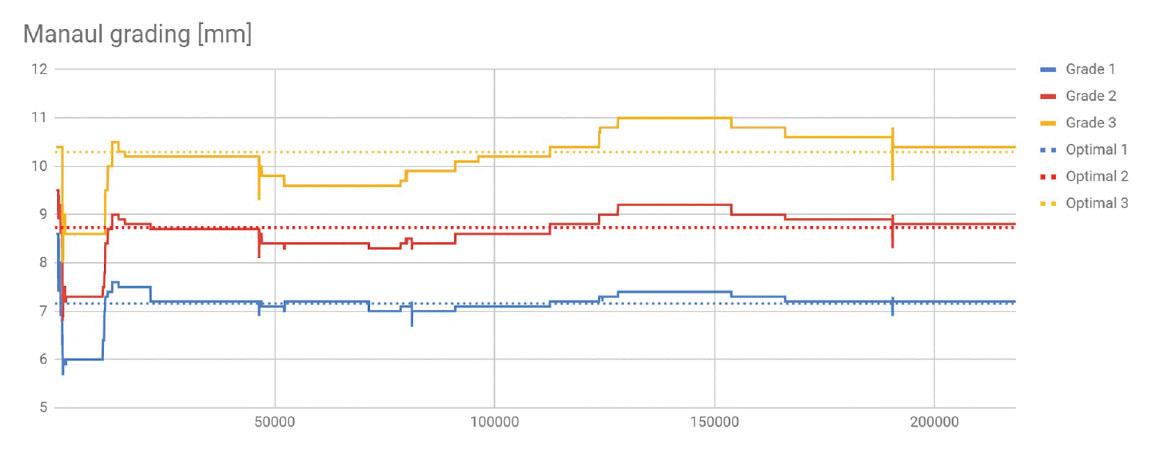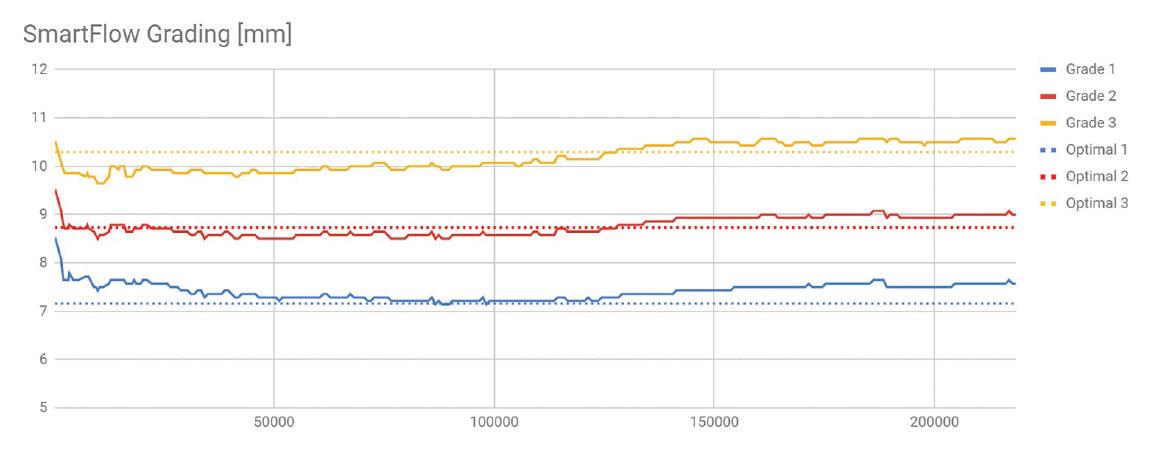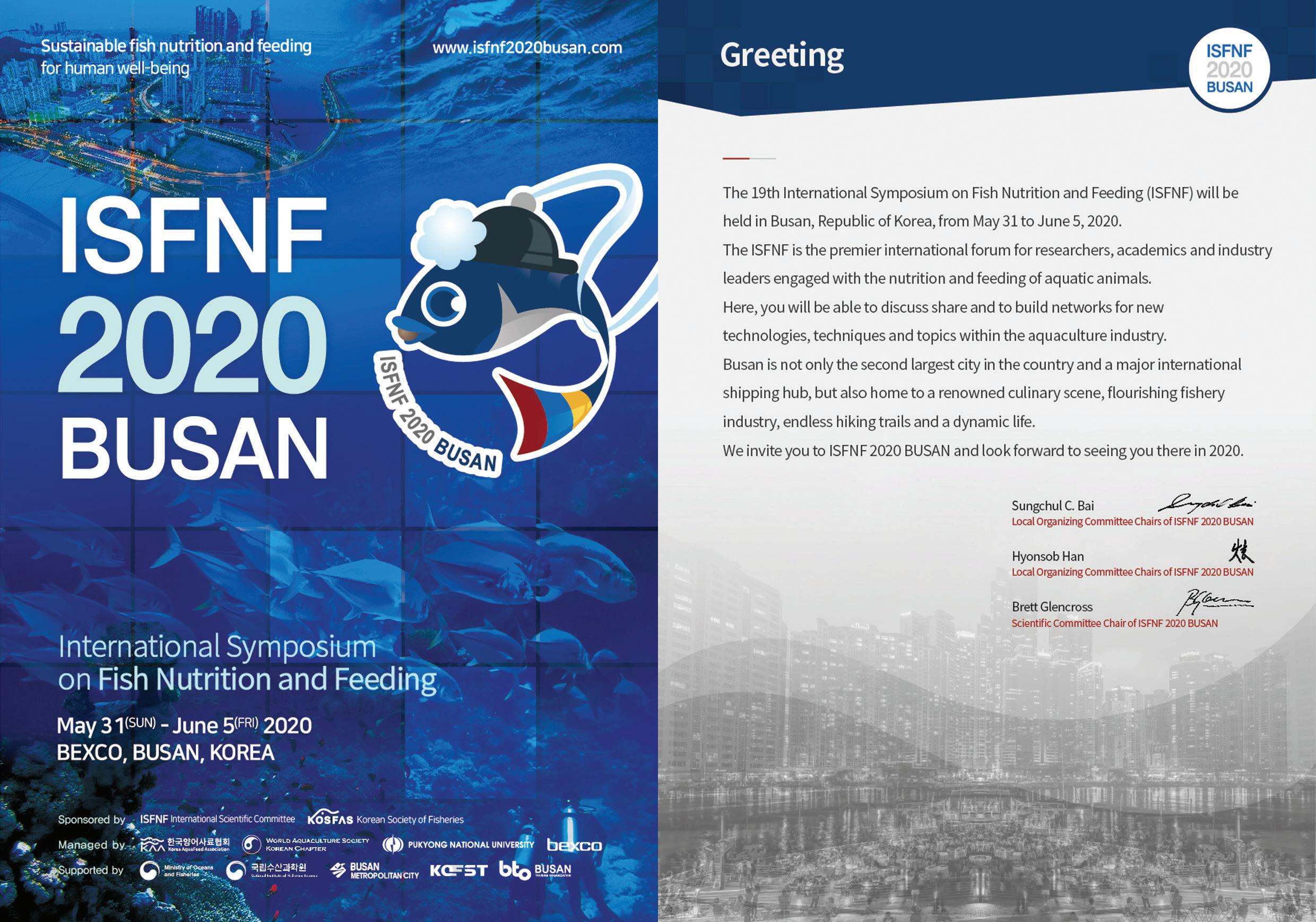
5 minute read
The future of fish grading is here
Albert Ingi Haraldsson, Vaki
Grading fish in aquaculture is extremely important and its advantages are numerous. An ungraded batch of fish typically displays a normal distribution. The normal distribution, sometimes referred to as the bell curve, has two main characteristics - the mean, or expectation of the distribution, and the standard deviation. The coefficient of variation (CV) is defined as the ratio of the standard deviation to the mean. It shows the extent of variability in relation to the mean of the population. It’s a common practice to grade when the CV has reached 30%. One of the objectives of grading fish is to split the fish up by size to get a certain percentage or biomass in each grade in order to utilize the farm to its fullest. To achieve this, the grader needs constant finetuning based on results from the counter. This can be difficult and time consuming and often results in an unsatisfactory output. VAKI has been working on making the grading process in hatchery simpler, more practical and more automatic. For this purpose, a system was created called SmartFlow.
Hatchery Feed & Management Vol 8 Issue 1 2020 Grading challenges Traditional industrial grading consists of a pump, a grader and a counter. The pump transports the fish from a tank to a grader. The grader divides the fish based on body thickness. Next, the fish flows though a counter which counts the number of fish in each grade separately.
The system falls under the category of a multi input, multi output system (MIMO). The system is sensitive to any changes. A small change to the input can cause a dramatic change in the final output and it’s not uncommon that hundreds of thousands of fish are graded in one session and the size range varies from a few grams to a few hundred grams. The process of grading fish also falls under the category of a nonlinear system, which in layman’s terms means the output does not react the same to changes in the input throughout the process. All these factors contribute to making the grading process fairly complicated and hard to tune. Here is where SmartFlow comes in.


Figure 1. Openings of each grading category (in mm) for manual and SmartFlow grading (Graph 1, 2). Average size of the fish (in g) when x many fish have gone through the counter (Graph 3).

Artificial Neural Networks An Artificial Neural Network (ANN) is a network consisting of simple processing elements called neurons which can exhibit complex global behavior, vaguely inspired by the biological neural networks that constitutes as a biological processor, or brain. The structure of which the neurons are connected, is termed a computational model or a network. The model itself is not an algorithm, but rather a framework.
ANN is an adaptive system that changes its structure based on external and internal information that flows through the network. In more practical terms, a neural network is a non-linear statistical data modeling and decision-making tool. They can be used to model complex relationships between inputs and outputs or to find patterns in data. Such systems “learn” to perform tasks by considering examples, generally without being programmed with any specific guidelines beforehand. For a network to “learn” the relationship between a set of inputs and outputs, it will need to be “trained” on an associated subset of data.
SmartFlow SmartFlow connects all the devices used for grading fish together in a hatchery for an automatic grading. It is a control system that optimizes the grading process by controlling the entire process. All aspects of the grading can be controlled. Enter in the desired output and the system takes care of the rest. It also offers many additional tools to assist with monitoring and quality control, like VAKI Cloud, VAKI Web and Modbus services.
Neural nets are specifically suited when control problems are nonlinear in nature. VAKI trained an artificial deep neural network (ANN/DNN) to control the grading process. The system gathers information from the equipment and uses the data to dynamically adjust the grader. SmartFlow processes the data and passes it to the DNN which, in return, outputs a decision, for instance increase/decrease size of grade 1, etc. Data collection, augmentation and training Hundreds of counting records were analyzed with the aim of generating data for training. The moving average of the fish width was plotted and the curves were used to generate multiple augmentation (“fake”) records, where the number of fish varied from 50,000 to 500,000, the average weight varied from 5 g to 1 kg and the CV varied from 10% to 100%.
The best values for the grader gaps satisfying the loss function, was found for each record in order to generate the inputs associated with the best possible outputs. The records were then simulated, where the starting positions of the grader gaps were sent to a random position. The simulation carried out like a normal grading session, but instead of using a controller, the actuators were always sent to the best values and the inputs and outputs were logged.
Data for 20,000 records was generated. The model was trained on 18,000 records and 2,000 were used for validation. The training was stopped when the validation error converged with an accuracy over 99%.
Tests A prototype was running on a farm which in return supplied the grading recorded. Thus, a grading session was carried out by a team of experienced farmers. The grading can be emulated by using the record, in other words, we can make the AI grade the same for each batch of fish. Therefore, the controllers can be compared with human performance. The AI was set to the same starting positions and given the same criteria. The first two graphs on Figure 1 show the openings of each grading category (in mm) and the third one shows the average size of the fish (in grams) when x many fish have gone through the counter. The top one is from the manual grade, which was carried out by experienced fish farmers, and the middle one is the result from the AI. The dotted lines are the optimal positions. Conclusions The AI was able to learn how to grade and was explicitly good at predicting if the size of the fish would change over the grading session. Thus, the network has learned to anticipate that the average weight will increase over time. This anticipation process, that is acting before exhibiting is hard to achieve with typical control algorithms. VAKI ́s new SmartGrader and pumps are all fully compatible with SmartFlow. As more SmartFlow systems go up, we will run more tests and further develop the system. VAKI truly believes that eventually most, if not all, grades will be conducted bysome sort of AI.

More information: Albert Ingi Haraldsson Development Vaki, Iceland E: albert@vaki.is










